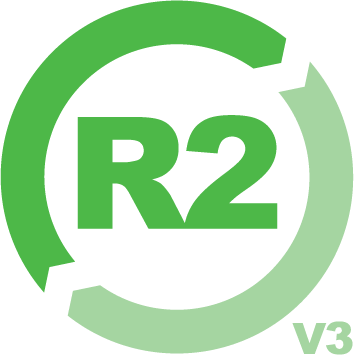Cisco has a wide range of network switches that can be used in data centers. The choice of which switch to use depends on the specific needs of your business. In this blog post, we will compare the different Cisco switch models so that you can make an informed decision about which switch is best for your business. Additionally, we will also discuss some of the key features of Cisco’s Meraki MS series switches, which are designed for medium-sized businesses.
Comparing the different Cisco networking switch models
If you’re not familiar already, you may be asking yourself what a switch even is. Simply put, a switch is a networking device that connects devices together on a computer network, by using packet switching to receive and forward data to the destination device. Switches work with Ethernet frames and Internet Protocol (IP) packets and can be used to create Gigabit Ethernet and 10 Gigabit Ethernet networks.
Cisco offers a wide range of switch models that cater to different needs. The models vary in terms of port density, port speed, scalability, and features. For example, the Cisco Catalyst 2960-X switch is designed for small and medium-sized businesses, while the Cisco Nexus 9300-EX switch is designed for enterprise-class data centers.
The main difference between these two switch models is their port density. The Catalyst 2960-X has 24 ports, while the Nexus 9300-EX has 48 ports. This means that the Catalyst 2960-X is more suited for smaller networks, while the Nexus 9300-EX is more suited for larger networks.
Another difference between these two switch models is their power consumption. The Catalyst 2960-X uses less power than the Nexus 9300-EX, making it more energy efficient.
Finally, the Cisco Nexus 9300-EX switch supports advanced features such as hardware virtualization and Quality of Service (QoS), while the Catalyst 2960-X does not. This means that the Nexus 9300-EX is more suitable for advanced applications, while the Catalyst 2960-X is more suitable for simple applications.
The key features of Meraki MS Series Switches
The Meraki MS Series Switches are a versatile and feature-rich set of switches that offer a wide range of benefits for businesses of all sizes. This switch it especially desirable for businesses with limited IT resources. Some of the key features of these switches include:
– A robust and powerful switching architecture that can support a wide variety of networking needs, from small office and home office (SOHO) networks to enterprise-level networks.
– A wide range of port densities, from 8 port models up to 48 port models, making them suitable for a wide variety of deployments.
– A choice of either an all-in-one or stackable switch form factor, making them easy to deploy and manage in both small and large networks.
– A rich set of features, including support for virtual LANs (VLANs), Quality of Service (QoS), link aggregation, and more.
– Comprehensive security features, including support for 802.1X authentication, access control lists (ACLs), and encryption.
– A simple and intuitive web-based management interface that makes it easy to configure and manage your network.
The Meraki MS Series Switches offer an exceptional combination of features and performance, making them an ideal choice for businesses of all sizes who are looking for a cost-effective and scalable switching solution.
Why Choose a Cisco Switch for Your Business?
Cisco is one of the leading networking companies in the world and offers a wide range of products, including switches. Cisco switches are designed for businesses of all sizes and offer a variety of features to suit the needs of any organization. Here are some of the reasons why you should consider a Cisco switch for your business:
- Scalability
Cisco switches are highly scalable and can be easily upgraded as your business grows. They support a wide range of protocols and technologies, so you can be sure that your network will be able to keep up with your growing business.
- Reliability
Cisco switches are designed for mission-critical networks and are built to be highly reliable. They offer advanced features such as redundancy and high availability, so you can be confident that your network will always be up and running.
- Security
Cisco switches offer comprehensive security features to protect your network from external threats. They can also help you enforce internal security policies, so you can rest assured that your data is safe from unauthorized access.
- Performance
Cisco switches are designed for optimal performance and offer a variety of features to help you get the most out of your network. They support advanced technologies such as Quality of Service (QoS) and Multicast, so you can be sure that your network traffic will always be managed effectively.
What kind of maintenance should you go with for your Cisco switch?
When it comes to the maintenance of Cisco switches, there is a debate between whether Original Equipment Manufacturer (OEM) or third-party support works better. While both offer advantages and disadvantages, it is important to weigh the pros and cons in order to decide which one will meet your needs most effectively.
Original equipment manufacturer (OEM) maintenance for Cisco switches provides certain advantages that may make it more attractive than third party support. For instance, OEMs typically provide access to specialized technical knowledge concerning their own hardware. This ensures a more efficient repair process since OEM technicians are well-versed in the capabilities and intricacies of their own products.
Also, OEMs often have a wide variety of parts available for immediate purchase or exchange if needed, reducing downtime due to repairs or replacements. Furthermore, OEMs usually offer service level agreements (SLAs) as part of their contracts which guarantee timely responses to service requests along with other benefits such as free software upgrades.
On the other hand, third-party maintenance and support can be beneficial for certain needs related to Cisco switches. One advantage is that third parties may offer a more extensive range of services such as onsite visits or custom programming solutions not available from the original manufacturer. This includes coverage on EOL (End of Life) and EOSL (End of Service Life) devices that may no longer be covered by Cisco, forcing you to upgrade to the new switch at an exuberant cost.
Additionally, some third-party providers specialize in specific hardware configurations – making them better suited for jobs that require expertise beyond basic repairs or maintenance work. Third parties also tend to have flexible contracts based on time and materials which makes budgeting easier compared to long term service agreements with an OEM.
Finally, while response times vary between different providers – some third-party companies provide faster customer service than many large organizations like Cisco who can take longer due to bureaucracy and red tape associated with corporate overhead costs.
Picking the right Cisco networking switch models for your data center.
There are a few factors you need to consider when choosing the right Cisco networking switch model for your data center. The first factor is the size of your data center. The second factor is the number of users that will be accessing the data center. The third factor is the type of traffic that will be flowing through the data center.
The size of your data center will dictate the number of switches you will need and the type of switch you will need. If you have a small data center, you can get away with a smaller switch. However, if you have a large data center, you will need a larger switch. The number of users that will be accessing the data center will also dictate the type of switch you need. If you have a lot of users, you will need a switch that can handle a lot of traffic. However, if you have fewer users, you can get away with a smaller switch.
The type of traffic that will be flowing through the data center is also a factor to consider when choosing a switch. If you have a lot of video traffic, you will need a switch that can handle video traffic. However, if you have less video traffic, you can get away with a smaller switch.
Cisco offers a wide variety of switch models that can fit the needs of any business, no matter the size. from small businesses to enterprise-level organizations.
How ReluTech can help procure and maintain Cisco Switches
As a third-party maintenance provider, ReluTech has certified engineers that can provide cost-effective support for all your Cisco switches, often saving up to 50% off when switching from Cisco support. Its services mirror the expertise of Cisco support and goes beyond with its timely response time to tickets, service-oriented representatives, and plethora of parts in its warehouse for replacement.
If you’re trying to reduce IT expenditure of maintaining your Cisco networking switches, need higher quality support, or want a hardware support provider who can extend the life of your EOL or EOSL equipment, get in contact with us and request a quote today to see how much you can save!

ABOUT THE AUTHOR | JASON FIGLIOLINI
Jason Figliolini is our Marketing Content Manager here at ReluTech. His top priorities are content creation for articles, blogs, and collateral to educate customers about cloud, hardware, and maintenance solutions. Outside of work, he enjoys reading books, attending concerts, and exploring Atlanta’s hidden gems.
Get in touch with Jason: jfigliolini@relutech.com
